Charlie Chaplin's Los Angeles: a black and white odyssey
In search of flickering reminders of Chaplin's LA, Kira Cochrane follows in the footsteps of The Little Tramp, on the centenary of his arrival in Hollywood
Charlie Chaplin slept here: LA hotels
Charlie Chaplin slept here: LA hotels
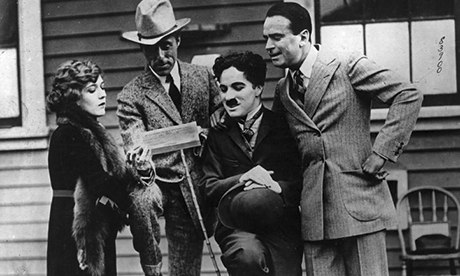
Charlie Chaplin, second from right, with stars Mary Pickford, Douglas Fairbanks (right) and director D W Griffith on the day they formed United Artists. Photograph: Topical Press Agency/Getty Images
The footprints and signature on the doorstep have faded, but there's no confusion about who built these studios: Charlie Chaplin, dressed as the Little Tramp, is painted on the door. Time-lapse footage of the construction of this mock Tudor village – now owned by the Jim Henson Company and identified by a 12ft statue of Kermit above the entrance – appears in How To Make Movies, a film directed by Chaplin in 1918. It shows the small hamlet emerging among the lemon groves that once undulated here, a city rising from the dust.
I wonder how much of Hollywood would exist if Chaplin had never arrived. If the manager of his touring vaudeville troupe had never received that abrupt, misspelled telegram from some filmmakers: "IS THERE A MAN NAMED CHAFFIN IN YOUR COMPANY" would this still be a drowsy little village?
Chaplin first came to Los Angeles exactly a century ago, a British comic in his mid-20s, arriving in an era when screen actors were just beginning to be known by name. At Keystone Studios, where he started work, the director Mack Sennett told him to put on a comic costume one day – "anything will do". So Chaplin contrived an outfit where everything was at odds: "the pants baggy, the coat tight, the hat small and the shoes large," he wrote in his autobiography.
By the time he walked out on set, a few moments later, he knew who this character was. The man he would play for the next 22 years was, "a tramp, a gentleman, a poet, a dreamer, a lonely fellow, always hopeful of romance and adventure". The character was the ultimate outsider, and within two years he was also a global phenomenon.
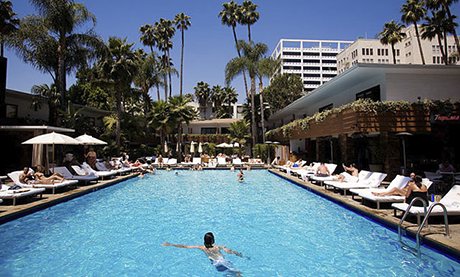 The Hollywood Roosevelt Hotel's pool. Photograph: Alamy
The Hollywood Roosevelt Hotel's pool. Photograph: Alamy
At that time, the future of Hollywood – a district with just 500 residents in 1900 – was far from guaranteed. The weather and light were similarly good in Florida and Arizona, and studios were thriving in New York. But in the time it took Chaplin to become the best-loved, highest-paid star the world had ever seen, Hollywood's destiny became undeniable. An industry town, devoted to telling stories, was born.
That makes Hollywood sound romantic, which isn't the obvious word to describe the area today. The walk from Chaplin's studio to Hollywood Boulevard is a blur of tattoo parlours, speeding cars and sprawling apartment buildings thrown up to house the steady stream of people who arrive with dreams of acting or directing in the shadow of the Hollywood sign. Tourists flock to the pavement outside Grauman's Chinese Theatrein search of their favourite actors' handprints while, not far away, a large outdoor screen promotes celebrity tours by popular gossip website TMZ. There are people dressed as Elmo and Batman, in battered costumes, touting to appear in tourist photographs. A lone Chaplin impersonator twirls his cane, looking a little lost.
But peer closer and you can still find traces of old Hollywood. It's in the huge handprints and tiny footprints made by silent-screen stars Douglas Fairbanks and Mary Pickford respectively, in 1927 in the concrete outside Grauman's. And it's in the Hollywood Roosevelt Hotel, which opened over the road, financed by the couple, the same year. Chaplin, a friend of Fairbanks, became a regular guest and it was here, in 1929, when the first Oscars ceremony took place, that Chaplin was given a special award "for versatility and genius in acting, writing, directing and producing" his 1928 film The Circus.
The Blossom Room, where those first Academy Awards were handed out in a ceremony for 250 people, is now a private venue but in the lobby is the Library Bar, which anyone can visit. It's a wood-lined, candlelit sanctuary of leather booths, with barmen who rustle up bespoke cocktails according to guest tastes rather than classic cocktail names, and it feels miles away from the tourist hullabaloo.
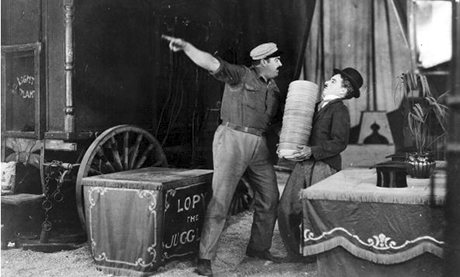 Charlie Chaplin in a scene from The Circus. Photograph: Hulton Archive/Getty Images
Charlie Chaplin in a scene from The Circus. Photograph: Hulton Archive/Getty Images
After our drinks, my partner Alex and I went to the Musso and Frank Grill, opened in 1919, where Chaplin dined so often he had his own booth at the front of the building, from which he could keep an eye on his car. With its smartly dressed waiters and red leather seating, it feels little changed. Our waiter told us the barman had been working there since 1969. The food was hearty and reasonably priced, my spaghetti with meatballs ($22) and Alex's clam linguine ($20) both delicious.
It was just a little further along Hollywood Boulevard that Chaplin filmed the first feature-length comedy ever made in the US, Tillie's Punctured Romance, released in November 1914. John Bengston's book, Silent Traces, shows stills from that film, in which Chaplin appeared with renowned comedians Marie Dressler and Mabel Normand, in the days when trolley cars rolled down this thoroughfare.
A short walk from Hollywood Boulevard is the barn leased by Cecil B DeMille and Jesse Lasky in 1913 to use as a studio for filming The Squaw Man (released 1914), Hollywood's first dramatic feature. The barn now houses the Hollywood Heritage Museum, complete with a replica of DeMille's office circa 1914, and mouldings saved from the Garden Court Apartments, where Chaplin's first director, Mack Sennett used to live. Dave, one of the museum's volunteers, and a gentle man with the air of an urban cowboy, led us on a detailed, personalised walking tour on Hollywood Boulevard for $10 each.
Dave told us about the days when the signs "no dogs, no actors" would appear in the windows of houses to rent, took us past the Egyptian Theatre, which hosted Hollywood's first premiere: Fairbanks's swashbuckling Robin Hood in 1922, and pointed out the Pig'n'Whistlerestaurant next door.
"Charlie Chaplin would go in, go behind the bar, and make his own ice-cream sundaes," he said.
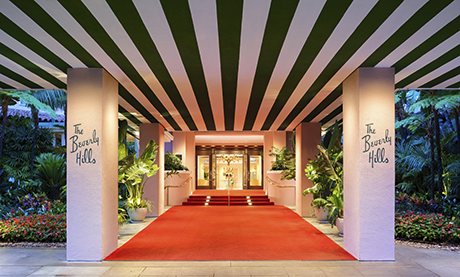 The undimmed glamour of the Beverly Hills Hotel. Photograph: Niall Clutton
The undimmed glamour of the Beverly Hills Hotel. Photograph: Niall Clutton
It was difficult to imagine any old Hollywood stars spending time on this drag now. Pickford may once have caroused in its bars but these days, one imagines, she would be happier at home in Beverly Hills, where she and other stars were lured by the Beverly Hills Hotel, after it opened in 1912.
Images of it in that era show it sitting in rural splendour, fields stretching for miles around it. The hotel, a pink ice-cream cake of a building hidden in a leafy grove, is still thriving among the types of people with money to pay for its opulence and discretion. Bedrooms have swag curtains and tasteful four-posters, sunken baths and black and pink marble in the en suites. In the grounds are 23 bungalows: Marilyn Monroe stayed in one, and Howard Hughes lived here for decades, with the staff catering to his unusual whims, leaving roast beef sandwiches in the trees, and hiding pineapple upside-down cakes in the grounds for his 2am treasure hunts.
The more straightforward guests tended, then and now, to eat in the hotel's restaurants, including the Polo Lounge, where for decades Chaplin had a standing reservation for booth number one. If he didn't show, it stayed empty. Anyone can make a reservation today and while the menu includes Siberian caviar for $180, the house burger, and West Hollywood salad (featuring quinoa, faro and kale), both $28, are more affordable options.
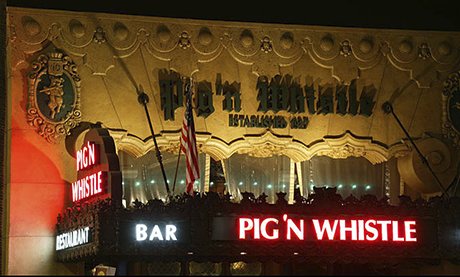 Pig'n Whistle Restaurant and Bar. Photograph: Alamy
Pig'n Whistle Restaurant and Bar. Photograph: Alamy
From the Beverly Hills Hotel, Chaplin would have strolled to Virginia Robinson's estate , where he played tennis and relaxed in the gardens while her pet monkeys roamed free. Two of the vivacious volunteers who have helped preserve the estate – Jeanne Anderson, in a perfect pink hat, and Marcella Ruble, in a peanut-shell necklace – showed us around the gardens, through the palm forest, with its flowering ginger and lady palm, the kitchen garden, with its lemon trees and creeping fig, to the metal garden seats, known as button chairs, that Robinson bought with Frank Capra.
"Try one," said Anderson. I did. It was ridiculously comfortable. You can book a tour today, see the bougainvillea weep over the tennis courts, and walk, once again, in Chaplin's footsteps.

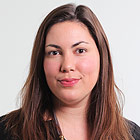
No comments:
Post a Comment
Please comment on what you see and read here. Tell me what you like, dislike or want to know about these three men.